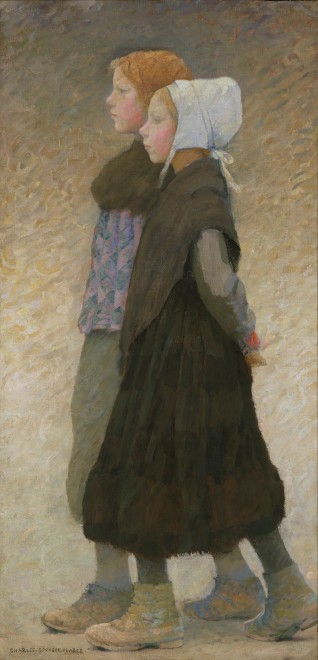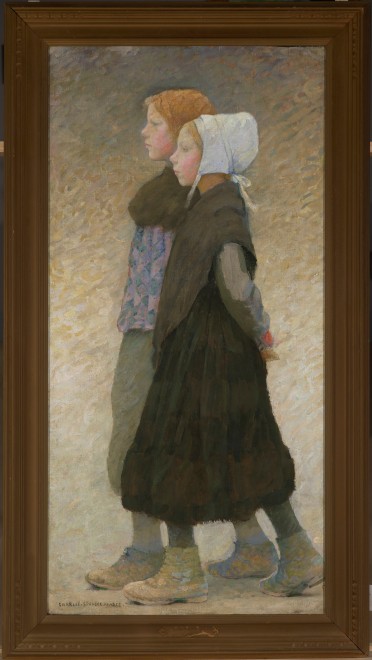Catalogue note
Charles Sprague Pearce’s time in France, especially in the Brittany region, significantly shaped his artistic focus on countryside subjects. In this painting, two young girls are captured in profile as they walk side by side, their figures gracefully aligned within the slender vertical composition. Their traditional attire, modest yet striking, reflects a deep connection to rural life. The muted tones of their dark clothing—earthy browns and blacks—contrast with subtle touches of vibrant color. The purple, blue, and green accents of the back girl’s dark overlay break the somberness, drawing the viewer’s eye to the delicate folds of her garment. Their matching footwear and synchronized stride emphasize their unity, reinforcing the theme of companionship and enduring connection.
Both girls are characterized by their vivid red hair, which stands out against the darker hues of their clothing. Their rosy cheeks add another layer of warmth, subtly complementing the intimate nature of the scene. One girl wears a simple white cap, reminiscent of the traditional Breton style, its clean, crisp lines offering a soft contrast to the more muted tones of her outfit, another reflection of both girls’ rural origins and the passage of tradition.
The background is a warm, brown-toned wash, evoking a rustic, earthy atmosphere, while Pearce’s loose, dynamic brushstrokes create a texture that conveys both immediacy and emotion. The lively, expressive brushwork contrasts with the smoother, more refined execution often seen in his other rural scenes, imbuing the painting with both physical movement and an emotional resonance that speaks to the scene’s introspective mood. With its symbolic undertones, the painting speaks to the beauty and simplicity of rural life, blending realism with a gentle suggestion of Symbolism. In their quiet companionship, the girls seem to embody the timeless connection between tradition and the human experience, offering a deeply reflective look at both the past and the enduring nature of human bonds.
This note was written by Elsa Dikkes.




